Ccome15
Sapling
Hello all, new to both the forum and Bonsai here. I had posted this in the “new to Bonsai” forum but believe it should live here.
I’ve recently (~4-5 months ago) started doing a lot of research on Bonsai, and have looked into a lot of the native species here in Louisiana. Two I have had a lot of interest in are white oak and the swamp chestnut oak and haven’t found a ton on info on either. My Aunt had given me a Swamp Chestnut Oak back in May that she’d been growing from a seeding for 2-3years, and I may have prematurely did some trimming before gathering enough info. I have read a lot since then, though this particular tree doesn’t have a lot of bonsai info out there.
These photos are before and what the tree looks like now (3-4months after trimming). The tree had three main branches/leaders at the top of its trunk. I cut all three back, but left a couple inches thinking it would die back. Wondering if I should have cut below the spot where the three met. Well a ton of new branches have exploded from these, and I’m worried in the long run there may be too many sprouts coming from the one spot.
I plan repotting into a shallow pot, and on doing some trimming before spring, but wanted to see what suggestions were out there. The base has a unique twist in it, but the lowest branch had died and started rotting which lead me to cut it backstage the time, but not off figuring I could always cut it later if needed. The tree is currently about 2 feet tall and in a pot with an inside diameter of 17 inches.
Thanks for any info you can provide!
I’ve recently (~4-5 months ago) started doing a lot of research on Bonsai, and have looked into a lot of the native species here in Louisiana. Two I have had a lot of interest in are white oak and the swamp chestnut oak and haven’t found a ton on info on either. My Aunt had given me a Swamp Chestnut Oak back in May that she’d been growing from a seeding for 2-3years, and I may have prematurely did some trimming before gathering enough info. I have read a lot since then, though this particular tree doesn’t have a lot of bonsai info out there.
These photos are before and what the tree looks like now (3-4months after trimming). The tree had three main branches/leaders at the top of its trunk. I cut all three back, but left a couple inches thinking it would die back. Wondering if I should have cut below the spot where the three met. Well a ton of new branches have exploded from these, and I’m worried in the long run there may be too many sprouts coming from the one spot.
I plan repotting into a shallow pot, and on doing some trimming before spring, but wanted to see what suggestions were out there. The base has a unique twist in it, but the lowest branch had died and started rotting which lead me to cut it backstage the time, but not off figuring I could always cut it later if needed. The tree is currently about 2 feet tall and in a pot with an inside diameter of 17 inches.
Thanks for any info you can provide!
Attachments
-
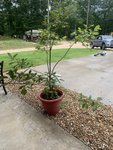 1E0C7AB7-A173-4D67-9610-73EF74CC02DF.jpeg342.7 KB · Views: 18
1E0C7AB7-A173-4D67-9610-73EF74CC02DF.jpeg342.7 KB · Views: 18 -
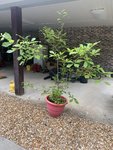 2C1DD340-8784-48F0-B3B7-D2D089B8D30A.jpeg294.5 KB · Views: 20
2C1DD340-8784-48F0-B3B7-D2D089B8D30A.jpeg294.5 KB · Views: 20 -
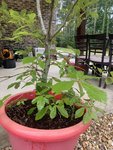 25CF0DAB-6C4E-4E5A-A0F4-6D4568C0A68F.jpeg256.7 KB · Views: 19
25CF0DAB-6C4E-4E5A-A0F4-6D4568C0A68F.jpeg256.7 KB · Views: 19 -
 ADA560D5-BEBF-4882-8720-F815D7D5FBC4.jpeg305.5 KB · Views: 19
ADA560D5-BEBF-4882-8720-F815D7D5FBC4.jpeg305.5 KB · Views: 19 -
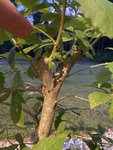 55925FDA-6E1C-4497-A01B-A305443384AB.jpeg202.6 KB · Views: 23
55925FDA-6E1C-4497-A01B-A305443384AB.jpeg202.6 KB · Views: 23 -
 DBFD5BEB-C9B5-41E8-9F7C-34F47647B32F.jpeg204.4 KB · Views: 17
DBFD5BEB-C9B5-41E8-9F7C-34F47647B32F.jpeg204.4 KB · Views: 17 -
 B6BC8800-FCF0-4589-A815-2449C1F72C33.jpeg284.4 KB · Views: 15
B6BC8800-FCF0-4589-A815-2449C1F72C33.jpeg284.4 KB · Views: 15 -
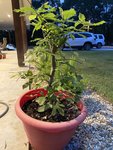 2CF4B117-D1AE-4AB2-B702-53DAE5BA0B31.jpeg268.3 KB · Views: 14
2CF4B117-D1AE-4AB2-B702-53DAE5BA0B31.jpeg268.3 KB · Views: 14

